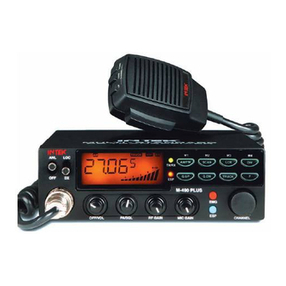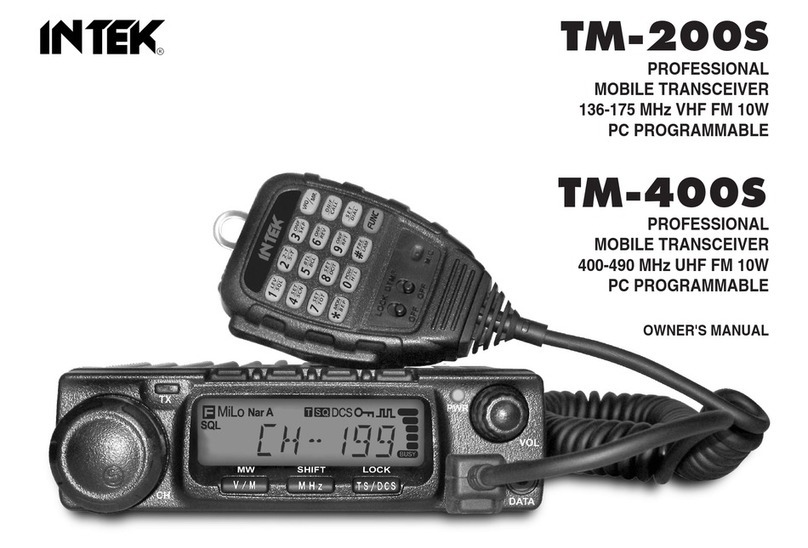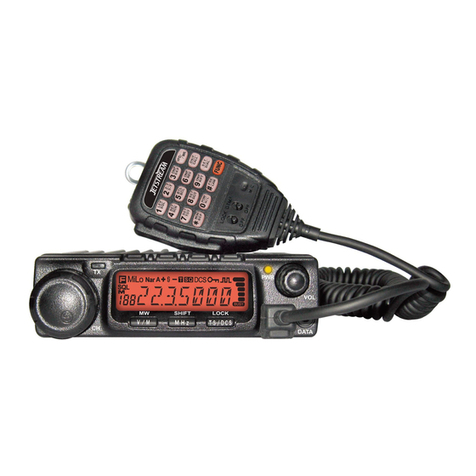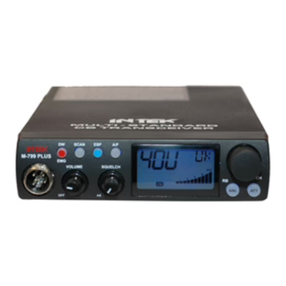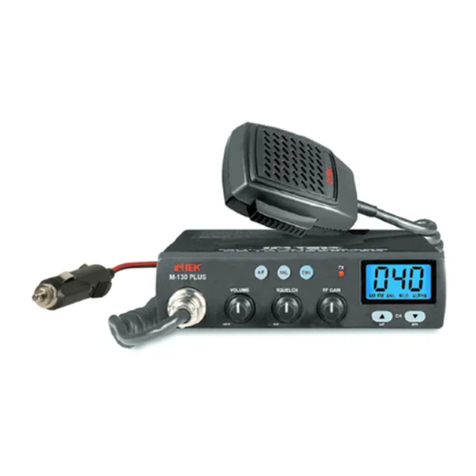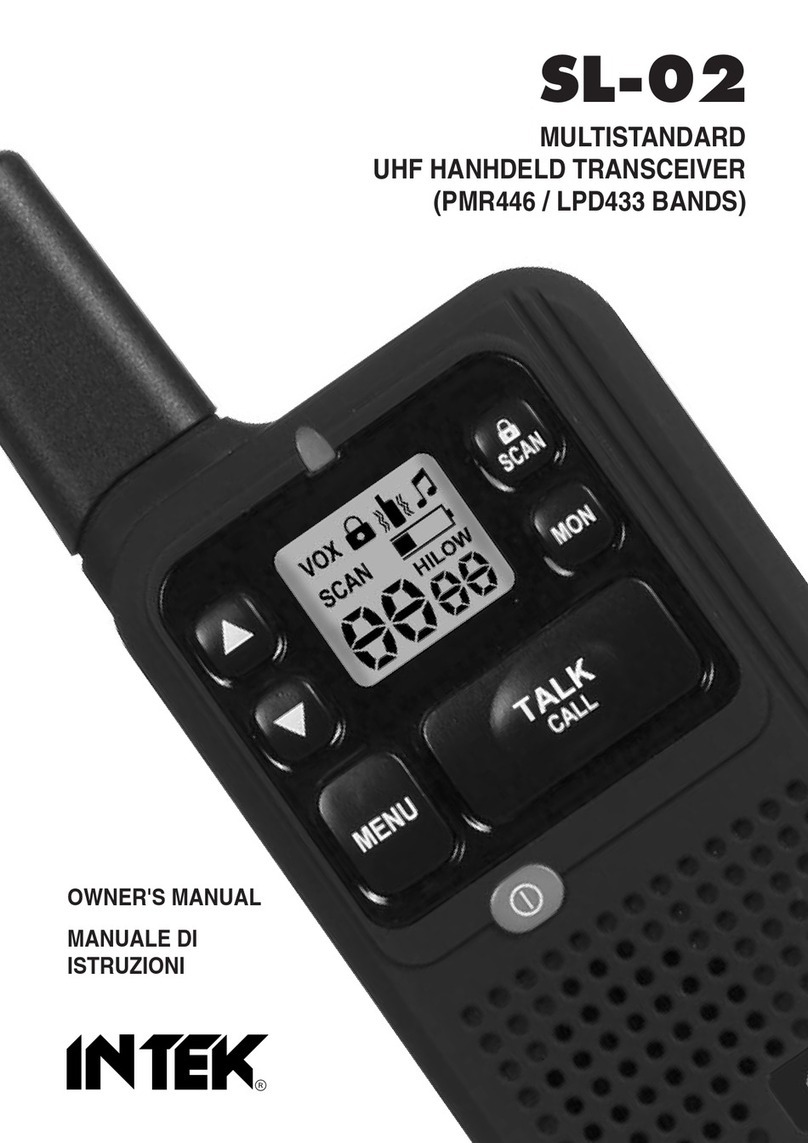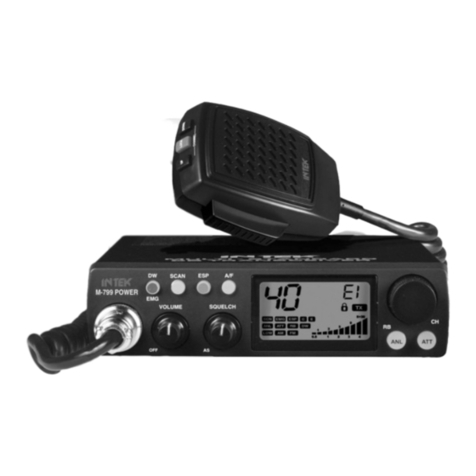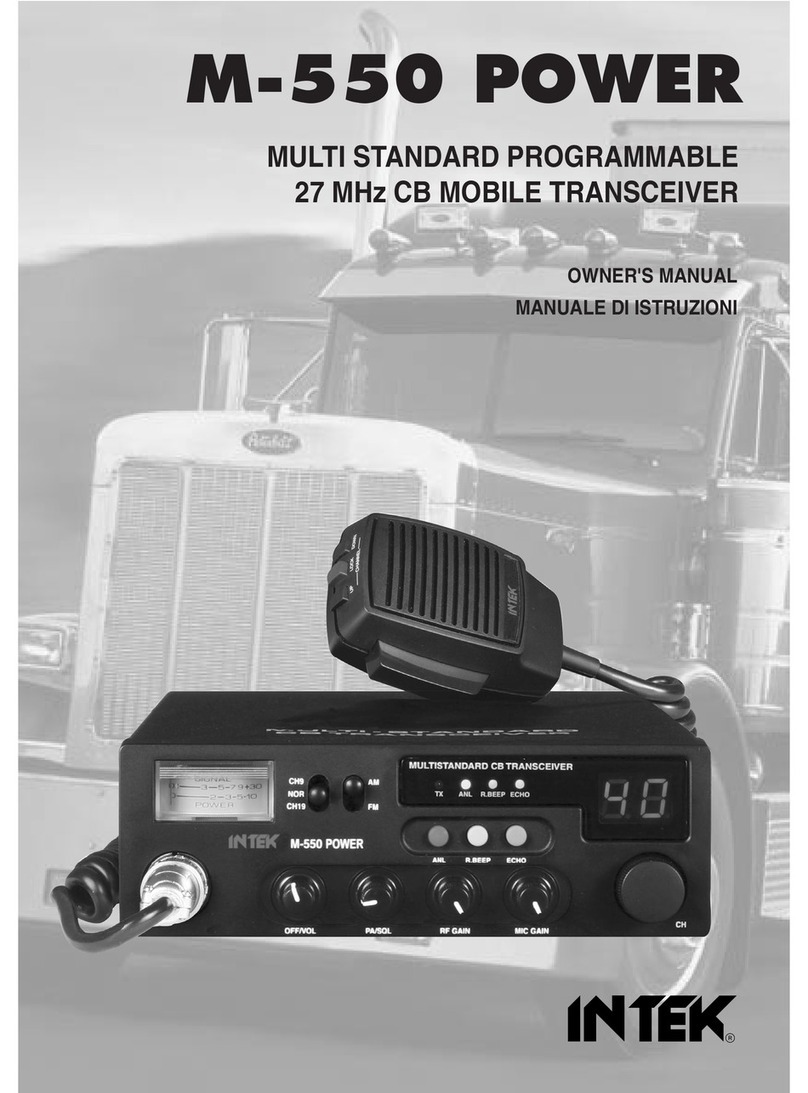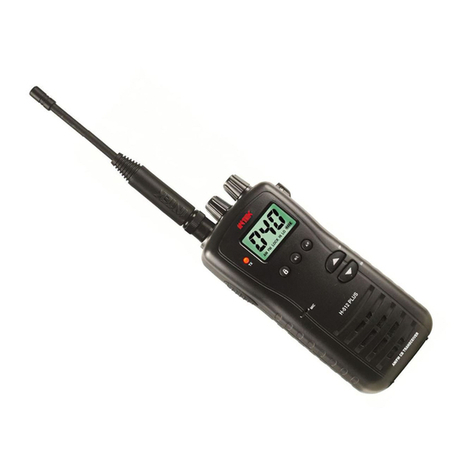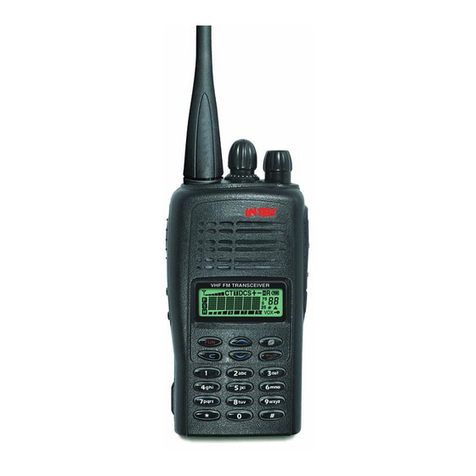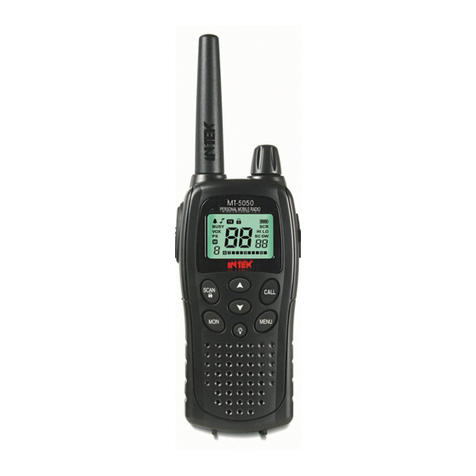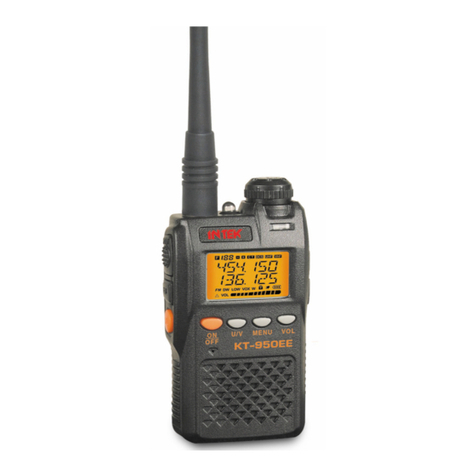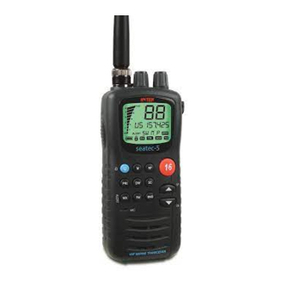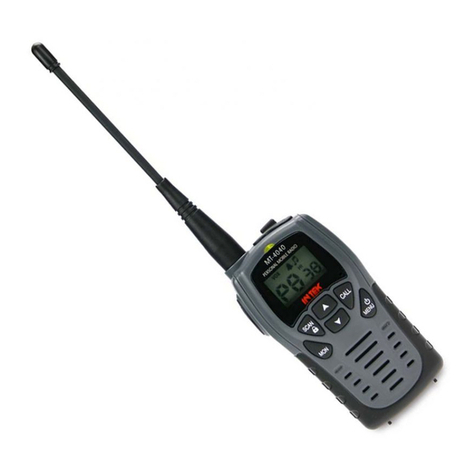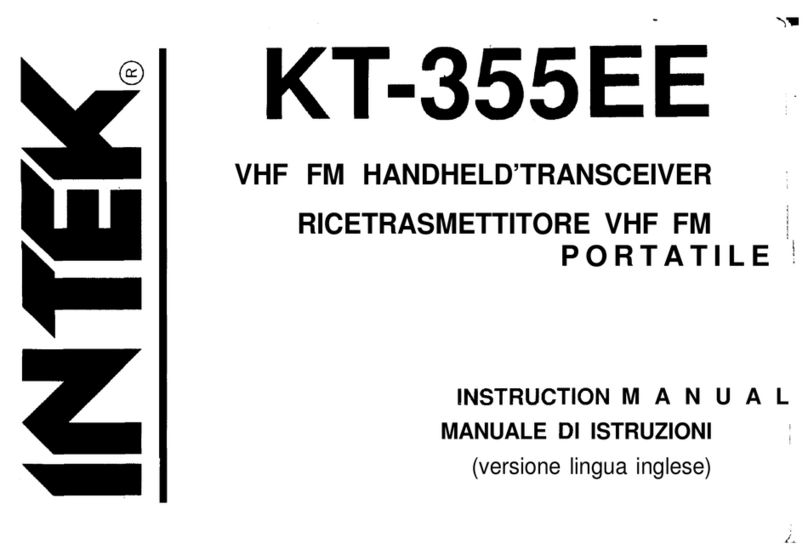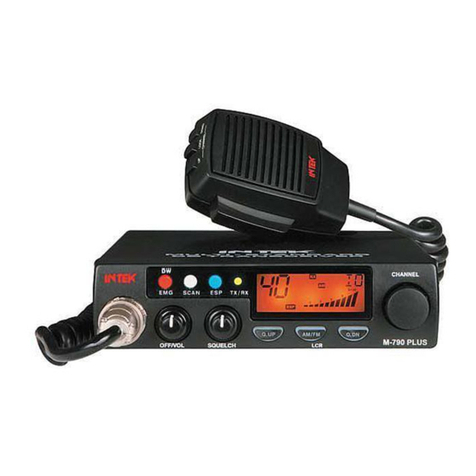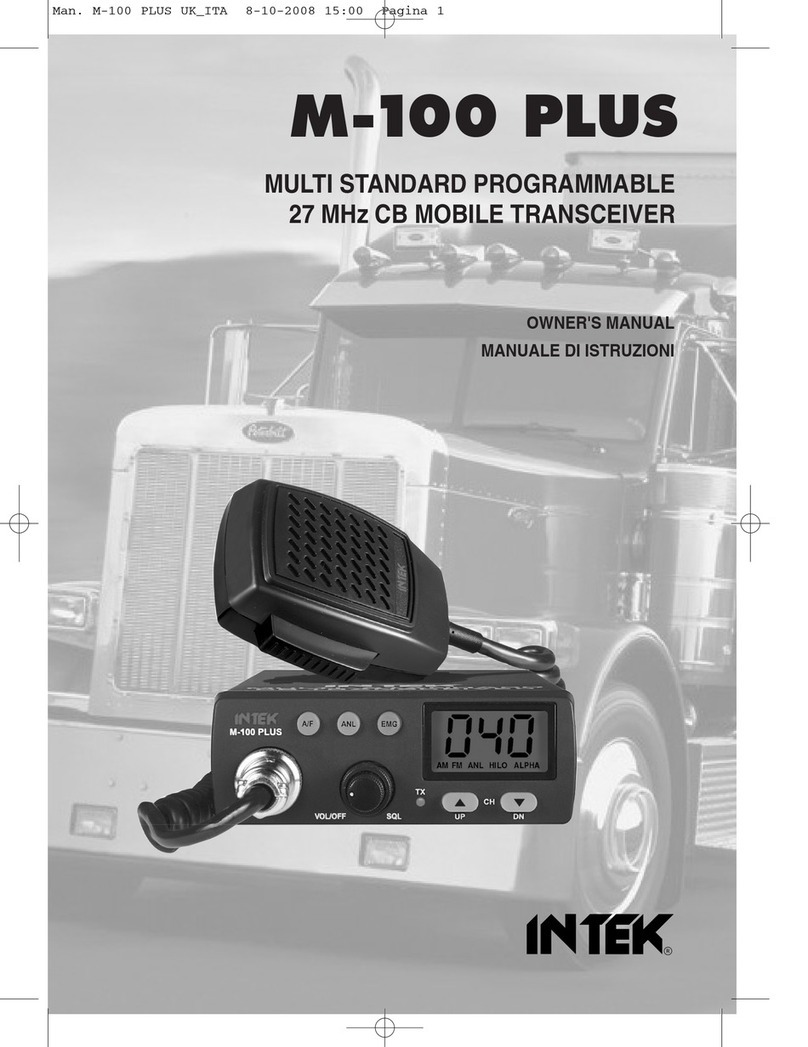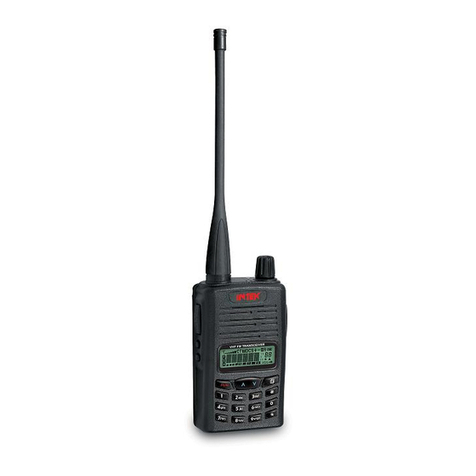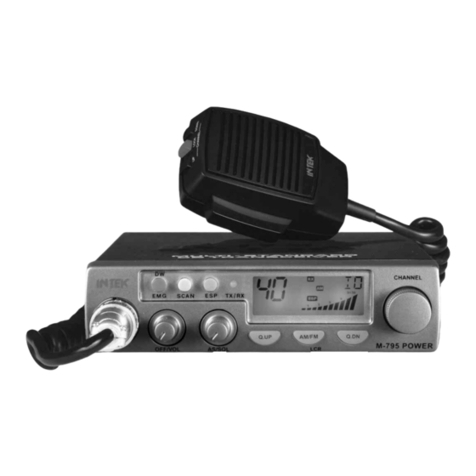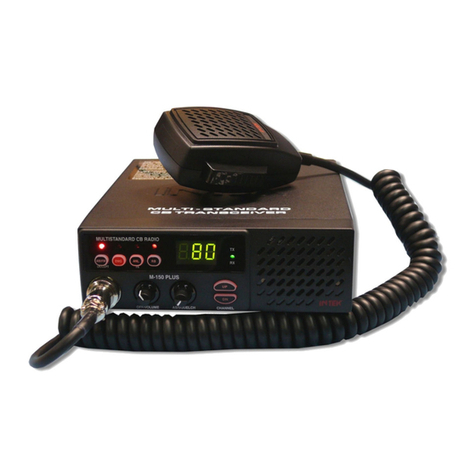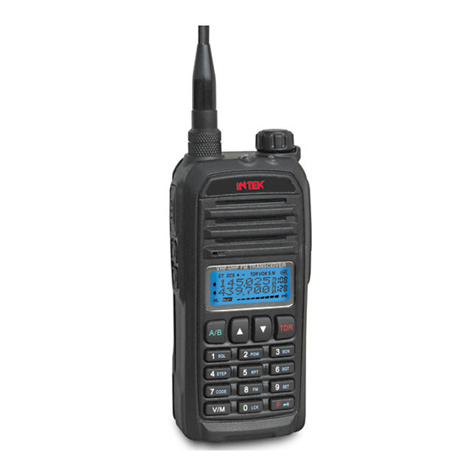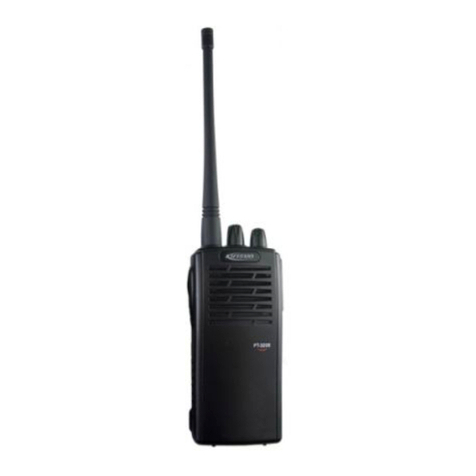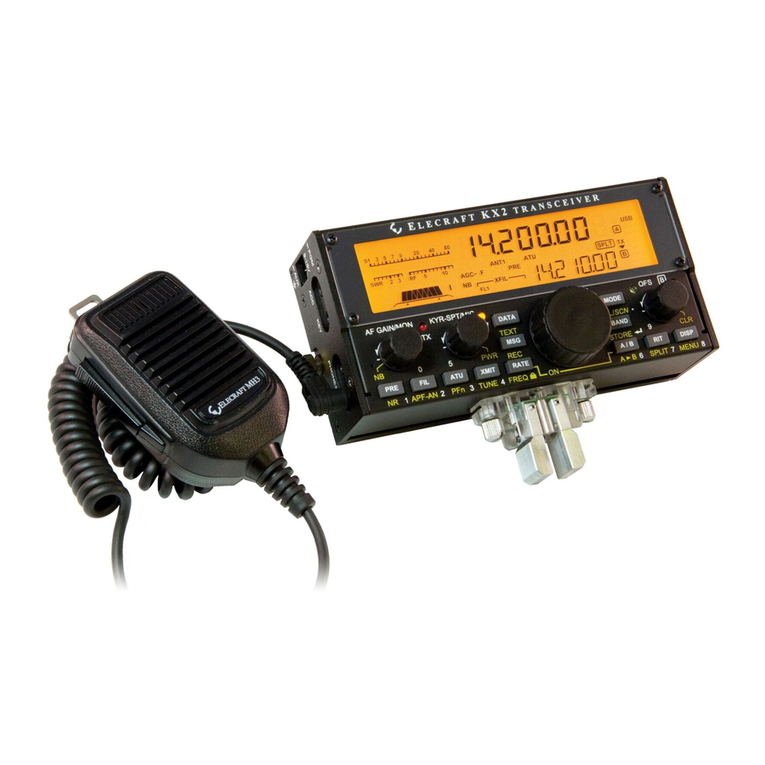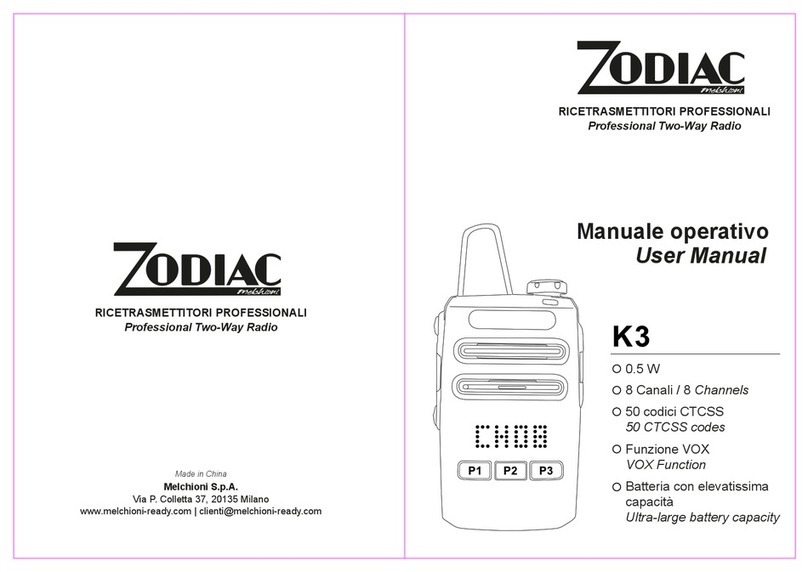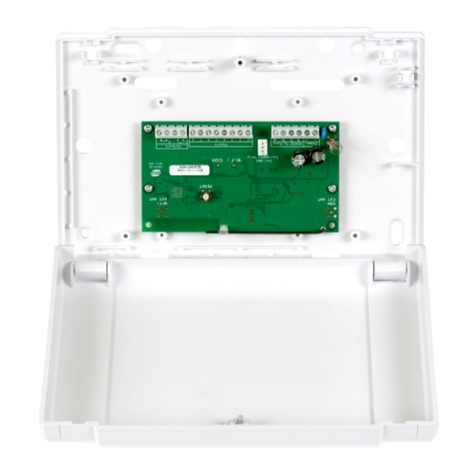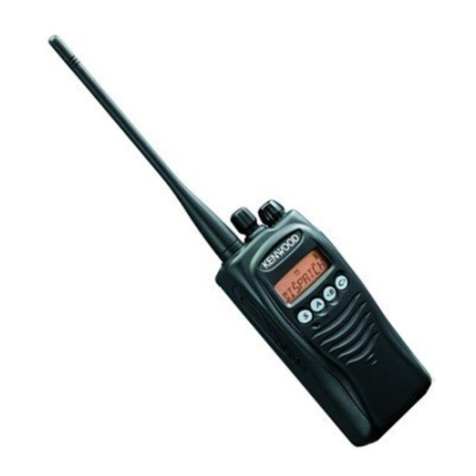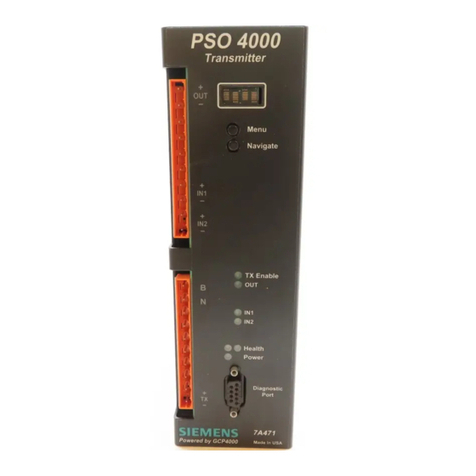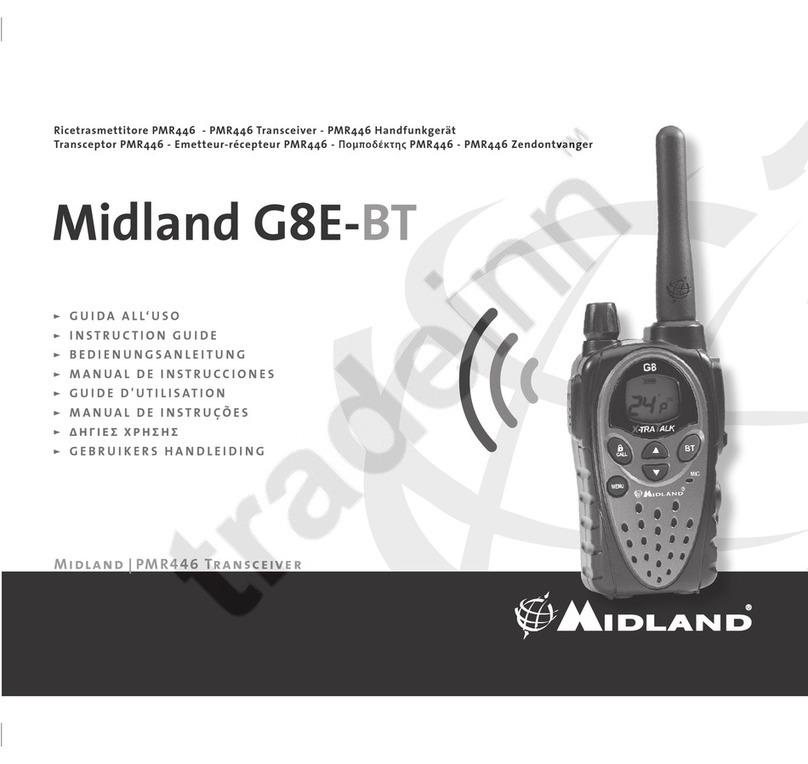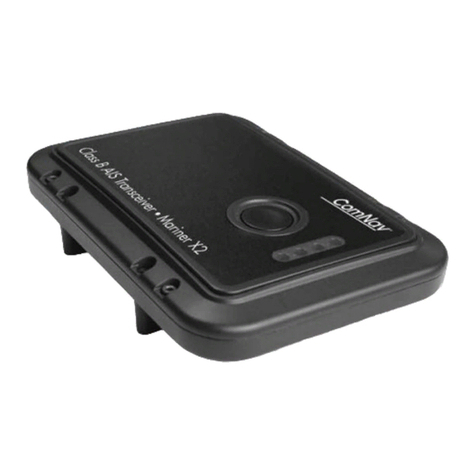
- 8 -
Controls, Indicators and operation
TRANSMITTING MODES
OPERATION IN PTT MODE WITH STANDARD MICROPHONE (supplied)
Connect the 4-pin standard microphone to the microphone connector (12). Select the PTT operating mode by turning
the PTT/VOX GAIN control (5) fully counterclockwise until a click is heard (PTT mode position). Press and hold the PTT
button (16) to transmit and speak into microphone. Release the PTT button (16) to return to receive mode.
OPERATION IN PTT MODE WITH EXTERNAL MICROPHONE (supplied)
AND REMOTE PTT CONTROL (supplied)
The supplied external earset-microphone (ESM-555) and remote PTT control (RPT-1) allow operating the radio in total
comfort and safety, without using the standard microphone that may be disconnected from the radio and removed. The
external earset-microphone has two separate jacks, one jack is for the earset signal and the other jack is for the
microphone signal. Each jack can only be connected to its correct position. Connect the microphone jack into the left side
hole (1A). The external earset jack may be connected if you wish to listen through the earset or it may be not connected if
you wish to listen through the speaker. For operation with the earset, please refer to the section "RECEIVING MODE" at
page 9. Connect the remote PTT control jack (19) to the REMOTE PTT socket (8). Install the remote PTT control in a
convenient location, such as on the speed shift lever or on the steering wheel, using the velcro strap (20), for your most
comfortable operation during driving.
WARNING ! Pay the greatest attention to installation of the remote PTT control and its connecting cable, in order
for these not to interfere with your driving operation.
Set radio to PTT mode, by turning the PTT/VOX GAIN control (5) fully counterclockwise until a click is heard (PTT mode
position). Press and hold the PTT button (18) to transmit and speak into microphone with normal voice. Release the PTT
button (18) to return to receive mode.
OPERATION IN VOX MODE (HANDSFREE OPERATION) WITH EXTERNAL MICROPHONE (supplied)
VOX mode allows using the radio totally handsfree, by automatic switching between receive and transmit mode, for
great comfort and safety while driving. Radio is automatically switched to transmit mode when you speak into
microphone and is automatically switched back to receive mode when you are not speaking. Therefore in VOX mode
you do not need to operate any PTT (push-to-talk) switch. Then the standard 4-pin microphone and remote PTT
control can be disconnected from the radio and removed. To operate radio in VOX mode, you must connect the
external earset-microphone (ESM-555) supplied with the radio to the EXT MIC/EAR socket (1). The external earset-
microphone has two separate jacks, one jack is for the earset signal and the other jack is for the microphone signal.
Connect the microphone jack into the left side hole (1A). The external earset jack may be connected if you wish to listen
through the earset or it may be not connected if you wish to listen through the speaker. For operation with the earset,
please refer to the section "RECEIVING MODE" at page 9. However, in VOX mode it is recommended to use the
external earset, in order to prevent strong audio signals coming from the main speaker (or external speaker)
from triggering the VOX function into transmit mode. This may specially happen when the VOX gain control
(5) has been set to a high level. Set radio to VOX mode by turning the PTT/VOX GAIN knob (5) clockwise and the
VOX icon (L) will appear on the LCD. Adjust VOX gain (sensitivity) by turning the knob clockwise. To disable the VOX
function, just turn the PTT/VOX GAIN knob (5) fully counterclockwise, until a click is heard (PTT mode position).
Important !
1. VOX gain must be adjusted in accordance with the noise level in the background. A noisy background and an
excessively high VOX gain might cause VOX to be triggered into transmit mode when you do not want it.
Therefore Volume level and VOX gain level must be adjusted carefully for the best compromise and for your
comfortable operation of the radio.
2. In case of a noisy background and environment, all vehicle windows should be kept closed, to prevent external
noise from triggering VOX into transmit mode.
English
